 EN224: Linear Elasticity
EN224: Linear Elasticity 
Division of Engineering
8.6 Application of Minimum Complementary Energy
Like the principle of minimum potential energy, the concept of minimum complementary energy is useful for obtaining approximate solutions to boundary value problems and to obtain bounds on solutions. We will illustrate the latter idea here.
Return to our favorite torsion problem
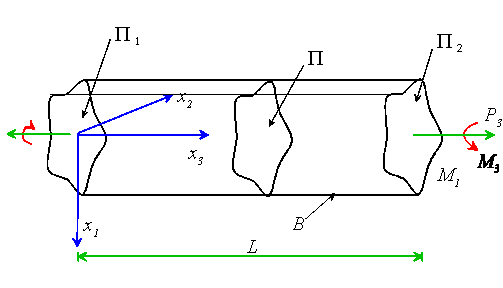
Let ![]() with
with
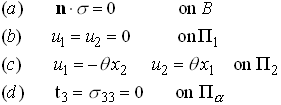
As before, we will attempt to bound the torsional stiffness k, defined such that

We will see that the principle of minimum complementary energy allows us to obtain a lower bound to the torsional stiffness. Begin by computing the exact complementary energy . Recall that
From the treatment in section 8.4, we already know that

Consider the second term

Hence
Actually, we could have obtained this result immediately, since it is
a general result that![]() Can you show this?
Can you show this?
Now, let ![]() be the components of a statically admissible stress
field, which satisfies
be the components of a statically admissible stress
field, which satisfies

Then, we know that ![]() , so that
, so that
Consequently, we can obtain a lower bound to k with any statically admissible stress state.
The question is, how do we generate an appropriate state of stress? Well, since we’re dealing with a two dimensional region, we can generate equilibrium stress fields using Airy stress functions. For example, we could take
with all other stress components zero. This is clearly an equilibrium
field and satisfies ![]() , but we still need to satisfy the boundary condition
on B.
, but we still need to satisfy the boundary condition
on B.
We can find a straightforward way to do this. Observe that the boundary condition may be expressed as
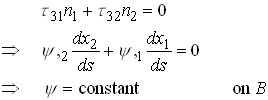
Next, let us express C in terms of ![]() . Observe that
. Observe that

Similarly
so that

We therefore obtain the following lower bound to k
Now, we want to find a scalar potential ![]() , with
, with ![]() on B,
which maximizes our lower bound. Note that we may adjust both the magnitude
and the distribution of
on B,
which maximizes our lower bound. Note that we may adjust both the magnitude
and the distribution of ![]() to get the best lower bound. Actually,
for a given distribution, we can calculate the magnitude exactly. Consider
a family of functions
to get the best lower bound. Actually,
for a given distribution, we can calculate the magnitude exactly. Consider
a family of functions ![]() , with
, with ![]() a scalar: we can then
find the value of
a scalar: we can then
find the value of ![]() to maximize the lower bound. Write
to maximize the lower bound. Write
where
Evidently ![]() is a minimim (and hence maximizes k) for
is a minimim (and hence maximizes k) for
Thus

Finally, to obtain a bound for k, we need to choose a suitable
![]() . Any function that is constant on the boundary will do. Of course,
we could choose
. Any function that is constant on the boundary will do. Of course,
we could choose ![]() =constant, but that gives us k=0 and we know
we could probably do better. For a simply connected section, we could try
=constant, but that gives us k=0 and we know
we could probably do better. For a simply connected section, we could try

where ![]() is the distance from the origin to the perimeter of
the cross section, as shown below
is the distance from the origin to the perimeter of
the cross section, as shown below
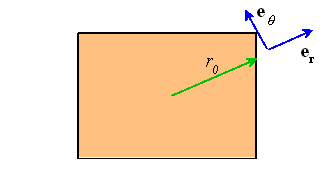
Hence
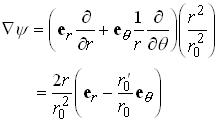
where
so that
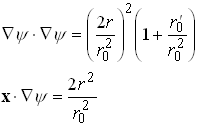
Substitute into the expressions for ![]() and
and ![]() to see that
to see that
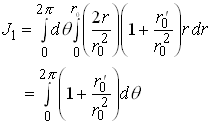
and

where A denotes the cross sectional area of the section.
Finally, we see that

It is a straightforward exercise to compute k for a given cross section. For example, for a circular section, we find
which is of course the exact solution.
As an exercise, you might like to compute lower and upper bounds to the stiffness of a shaft with square cross section, and then compare the bounds with the exact solution given in Section 4.2.